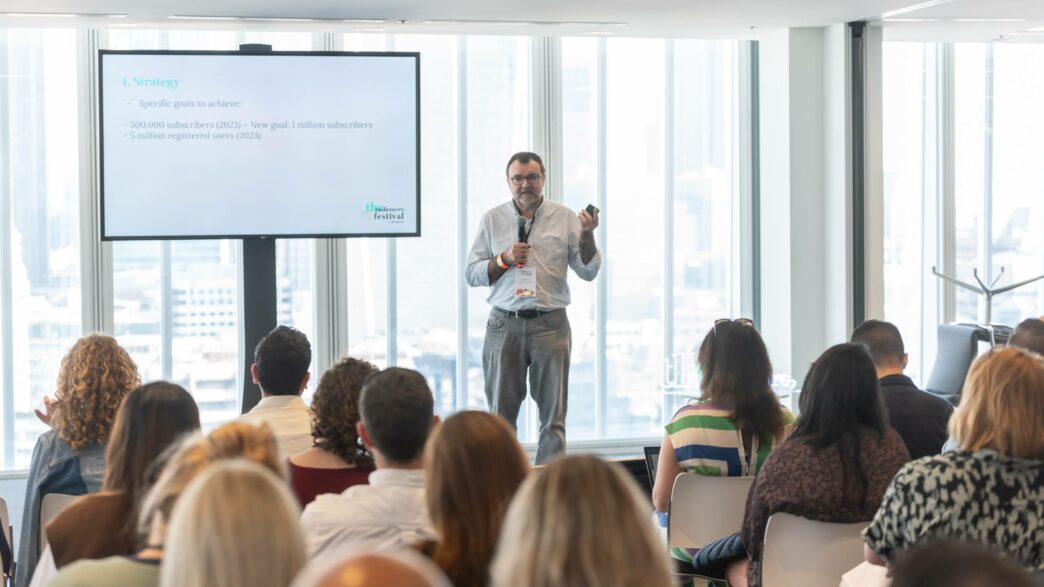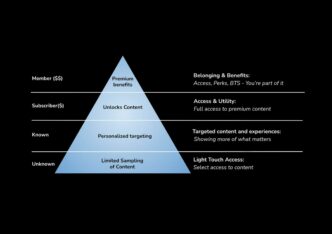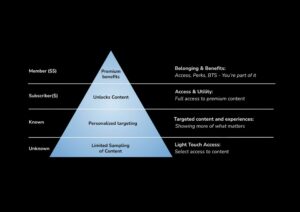

Journalist, Writer, Consultant and Professor specialized in Digital Media, Ismael Nafria Mitjans has published multiple books diving into the strategies of successful digital subscription media businesses, including Argentina's Clarín.
Speaking at The Audiencers' Festival London, in June 2024, Ismael shared 5 secrets behind the leading Spanish-speaking media subscription's success. If you speak Spanish, you can learn more about Clarín's strategy in Ismael's book, Clarín Actualizado.
5 key elements to Clarín’s digital transformation success
- Strategy
- Registration & Subscription
- Big Data team
- Newsroom organization
- Decisive notes
Plus Ismael shares their latest numbers and figures.
1. Strategy
Clarín’s team holds an annual meeting, defining specific goals and a multi-year strategy. Of course, this is nothing new – most businesses have strategic meetings – but Clarín ensures this is translated throughout the whole business, influencing everything they do as a company. It has, for instance, led to some of their most successful projects, including Club 365 (their membership), their big data team, registration strategy and the newsroom re-organization.
Just like The New York Times, they also establish public goals, ensuring they’re held accountable and that everyone in the company sees this as a set target to achieve. For instance, in 2023 they settled on:
- 500,000 subscribers (2023) – they achieved this, so their new goal is 1 million subscribers
- 5 million registered users (2023)
Strategic positioning was to completely transform the company:
2. Registration & subscription
Clarín’s strategy was to launch digital registrations first and subscriptions later. The idea here was to be able to understand their audience and willingness to convert before asking readers to pay.
To begin with, they launched the so-called “silent registration” in 2014, but this wasn’t enough, so they committed to blocking content with registration walls.
The move to registration was a significant change in the Argentinian market, so they decided to make this decision hand-in-hand with their main rival, La Nación, considering it as a strategic move for the future of the industry as a whole.
On February 1st 2015, Clarín and La Nación launched user registration: a new stage for digital journalism in Argentina.
The signwall or registration wall was based on a metered model, which allowed a certain number of articles to be read each month (20 at the beginning) before users were asked to register. Thanks to the registration, it was confirmed how essential its most loyal users were for Clarín’s business. It changed the vision of the business, creating a new culture of audience development across the whole company.
Evolution:
- September 2015: half a million registered users
- April 2020: 2.4 million registered (and the group’s sports daily, Olé, 765,000 registered)
- End 2023: More than 5 million registered users
The registration project, which was later joined by the digital subscription project in April 2017, has had a major impact on the reorganization of Clarín’s editorial work.
3. Big data team
One of Clarín’s goals has to become a data-driven company in which all decision-making is based on data. According to Ismael, it’s one of the key differentiators between Clarín and other media houses, especially in the Spanish-speaking world.
Interestingly, the publisher’s Big Data team was born not out of the technology team but from the business team, to support the development of Club 365, Clarín’s membership offer. Building and growing this Big Data team to help collect and process information to support teams across the business in a variety of ways, it gave Clarín a huge advantage from an early date.
Today, dashboards are part of the day-to-day work of multiple departments and professionals at the newspaper, both in the business areas and in the newsroom.
4. Newsroom organization
Since the 2008 paper and web merger, successive reorganizations have been made according to Clarín’s objectives. The most recent (2022) defines two main objectives, divided into 4 editorial teams:
- Attracting new subscribers and retaining existing subscribers
- Politics, Economy, World and Paper
- Society, Sports, Entertainment and Zonals
- Loyalty
2. Reaching large audiences (advertising, new users, relevance)
- Massive audience: Breaking news, SEO, social networks, front page, video and photography…
5. Decisive notes
To boost digital subscriber acquisition, Clarín‘s editorial team has worked on a very interesting journalistic concept, internally named “the decisive note”, designed to convince users to subscribe to the newspaper.
When asked why a user becomes a subscriber, the internal “decisive notes” document explains that “there is undoubtedly a factor of adhesion to the brand”, but that subscription does not occur “without shock” – i.e. without a user finding that they can’t access certain content without paying.
This “convincing process can be long,” although “the decision is usually impulsive”, made “by wanting to access an article with differential value and a unique focus”. “These articles are the decisive ones,” and without them “there are no subscribers.”
Management at Clarín worked on defining this type of content to ensure journalists are producing enough of these articles. The idea was to find an appropriate balance between free access news and “decisive notes”, which would be restricted to subscribers-only
> To read more about this topic, check out Ismael’s article on Clarin’s decisive notes.
Homepage management, balancing decisive notes and free content
For Clarín, the homepage is “the gateway for subscribers and loyal users, those prone to subscription”
The team must therefore “privilege its own content with a singular focus, even in urgent news. The decisive notes must have a continuous and important presence in the first scrolls.” – in short, the decisive note articles will always be top of the homepage, taking center stage.
Within the first scrolls:

After a few scrolls:

“Of the 500,000 daily visitors to the homepage, those who enter more than three times a day do not reach 5% of the daily average. And more than 40% only visit the homepage once a day.”
“We must be very careful in maintaining our decisive notes in privileged positions to be able to show them to the 95% of users who visit us between 1 and 3 times a day.”
Latest numbers and trends
The paywall is already the second largest revenue source (above digital advertising) and is on track to become the top revenue source by 2025.
Digital revenues are expected to account for 55% of total revenues by the end of 2024.
Digital revenues already pay for all offline and online media salaries (approx. 1,000 people).












